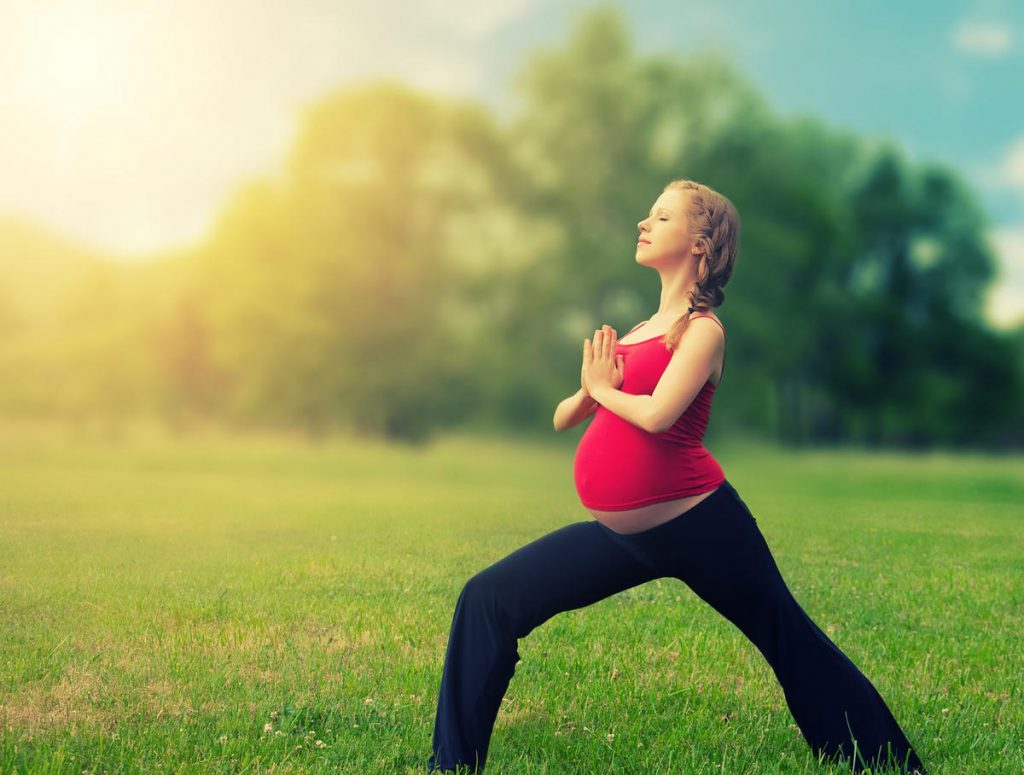Pregnancy is a long and tough process and there are a lot of preparations, techniques, and steps that are needed from a future mother. There is no doubt that maintaining a healthy body is a must throughout this process. Aside from eating healthy and nutritious foods and taking supplements, there are a lot of fitness related routines, such as regular exercise, walking, stretching, meditation or practicing yoga during pregnancy to keep you in good health.

More and more women are getting into it. Yoga offers some easy poses that are suited to pregnant women. Prenatal yoga classes are crafted specifically for pregnant women. Prenatal yoga might also help in preparing for labor and promoting your child’s health. But before you start prenatal yoga, it is important to understand what yoga poses to avoid during pregnancy or speak to your doctor to ensure you can you do yoga while pregnant.
Yoga is centered on the balance of your breath, body and mind. Such balance is achieved through relaxation, meditation, breathing and physical exercises. There is a variety of yoga that is suited to any fitness levels. Yoga and pregnancy are a perfect combination. Yoga during pregnancy is safe and healthy to do with the right modifications and poses. Yoga classes usually begin with the warm-up session; stretching your arms, legs, and back. Then, your posture will help boost your endurance and strength. Classes end in relaxation or through guided meditation sessions. This helps you feel refreshed and windblown. Most yoga classes last for about an hour.
Yoga is an excellent way to improving one’s mental, emotional and physical well-being. The postures might help you to ease muscle tension, to stay mentally alert through breathing, meditation and relaxation, and might improve your blood circulation, flexibility and muscle tone. More specifically, prenatal yoga is much like the other kinds of childbirth-preparation procedures.
Prenatal yoga encourages mental focus, focused breathing, and stretching. It is safe and has a lot of benefits it may offer, not only to the mother but also for her baby. It improves sleep, decreases lower back pain, headaches, shortness of breath and nausea, reduces anxiety and stress, increases flexibility, strength and endurance of your muscles in preparation for childbirth.
Yoga and Pregnancy
Yoga is actually good for your body and for the baby as well, since its breathing technique can assist you in becoming calm and relax during delivery. It can aid in labor by relieving the tensions around the birth canal or in the opening of the pelvis. Other than physical and mental benefits, it also helps you bond and mingle other pregnant mothers.

If you’ve never done yoga before, pregnancy can be an ideal time to start. Tell your midwife or doctor before starting any form of yoga or any kind of exercises while you’re pregnant, especially you haven’t done it before. For further information, talk to your instructor and raise any concerns or discomfort you may have.
For beginners, start slowly and gently and do the simple postures. Gently allow your body to open or lengthen during every posture, rather than pushing yourself to achieve it. The postures are modified by your instructor to suit your current stage of pregnancy. Always listen to the instructor and your own body. If you feel that you’re tired during a class, then have a break. Take a drink of water and rehydrate your body often. Also, try to eat a light snack an hour or more before going to your yoga class.
Generally, the posture being offered by yoga is crafted to stretch, not to strain or harm you. If you feel any discomfort or pain, stop whatever you’re doing.
Yoga and Stages of Pregnancy
The First Trimester
Some specific pregnancy yoga poses are advisable during early pregnancy, such as standing yoga poses. It will help in making your legs generate energy and enhance blood circulation. In some cases, yoga advises pregnant women not to try any yoga postures in the first trimester if you’re not used to it or haven’t done it before. This is because miscarriages are more common in the 1st trimester. Even though there’s no evidence that yoga during pregnancy, or any form of exercise, during the first trimester can harm a pregnancy, some yoga instructors recommend not to practice it just to be safe. If you’ve decided to practice yoga in your first trimester, keep to breathing exercises and relaxation.
The Second or Third Trimester
The second or third trimester can be one of the best times to start yoga if you’ve never done it before. It is because, during this stage of pregnancy women are less likely to feel sick or tired. But one may reduce the time spent in practicing physical and posture exercises to prevent overwork or fatigue. Instead, it is advised to focus more one meditation and/or breathing. It is not also advisable to practice from the 10th to the 14th week of your pregnancy since it is the crucial point of the process. Try not to overstretch your abdomen.
For a baby conceived using IVF, some instructors recommended that you should wait until 20 weeks before starting yoga. This is to ensure that the procedure is successful as IVF pregnancies are more likely to result in twins or multiples, and a higher risk of miscarriage is attributed to multiple pregnancies. It is best to cautious and safe.
Guest post submitted by RocketParents.com

